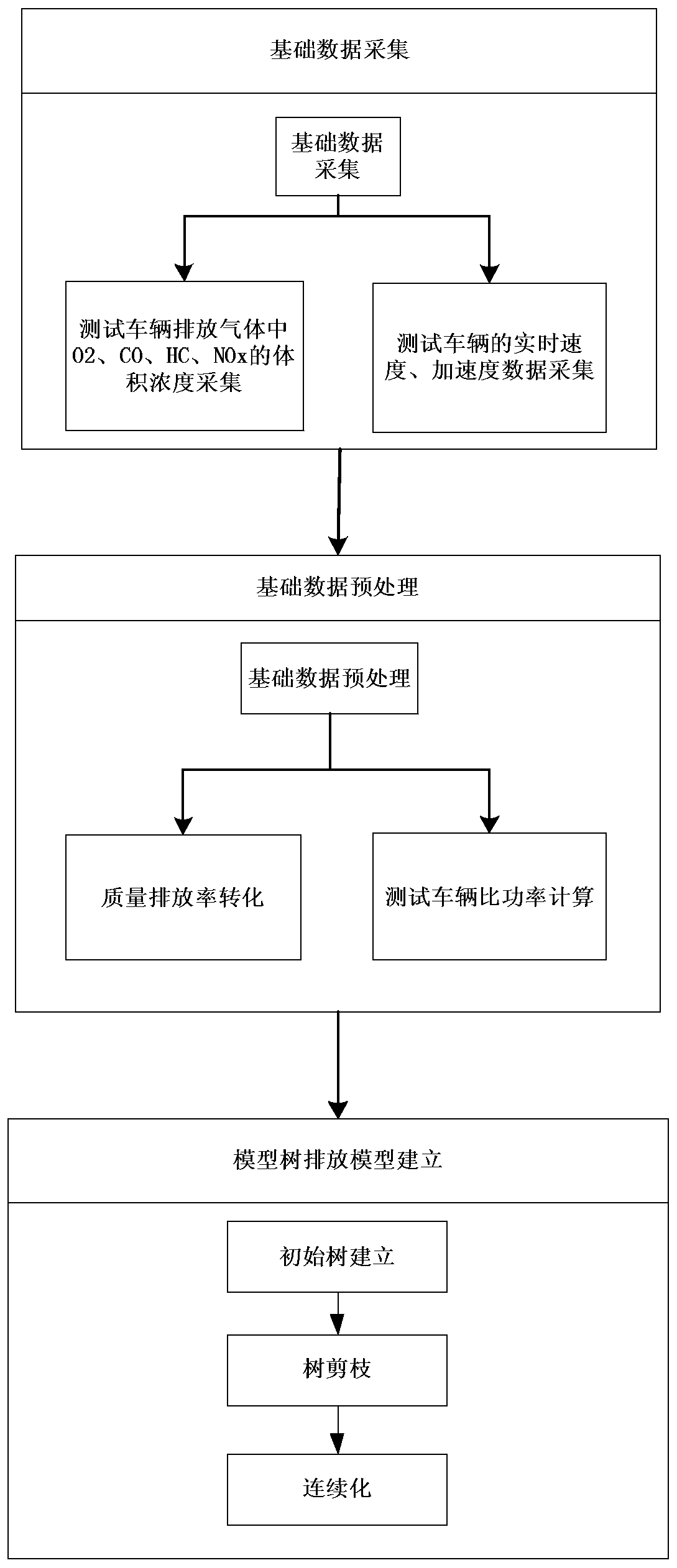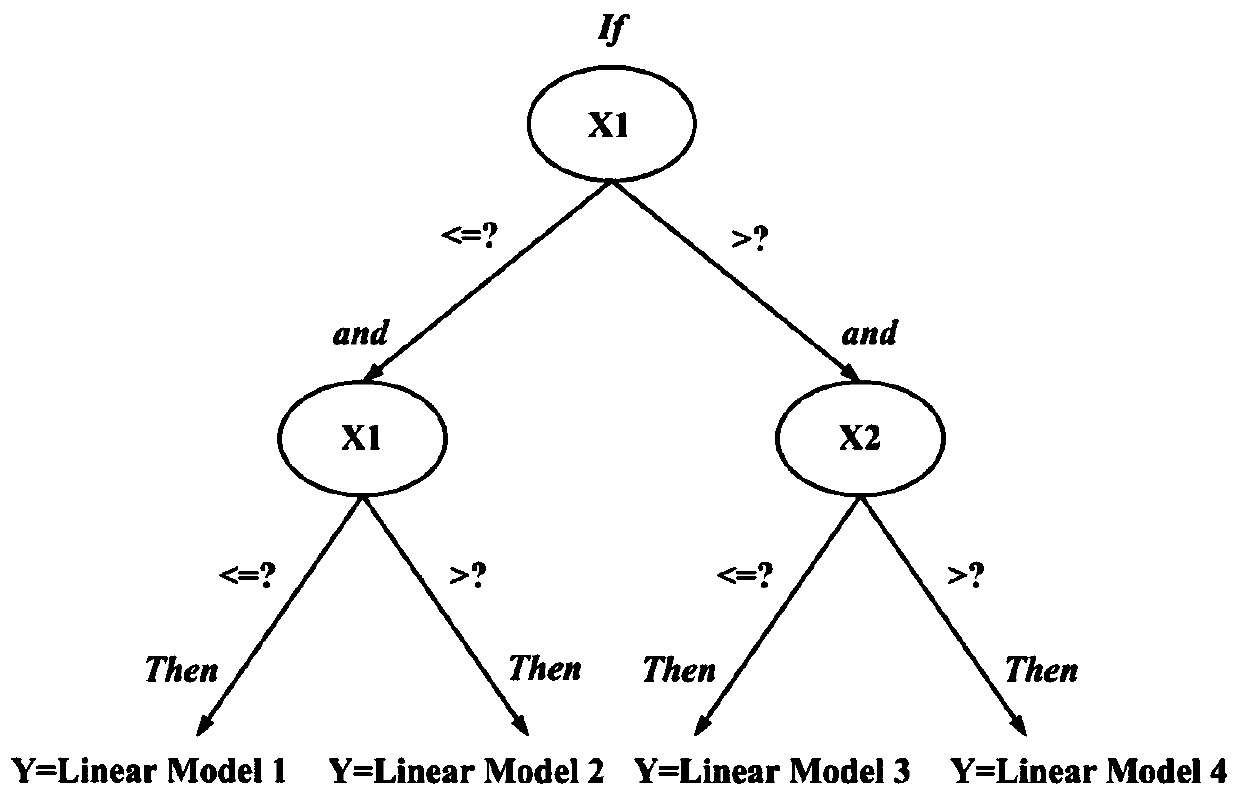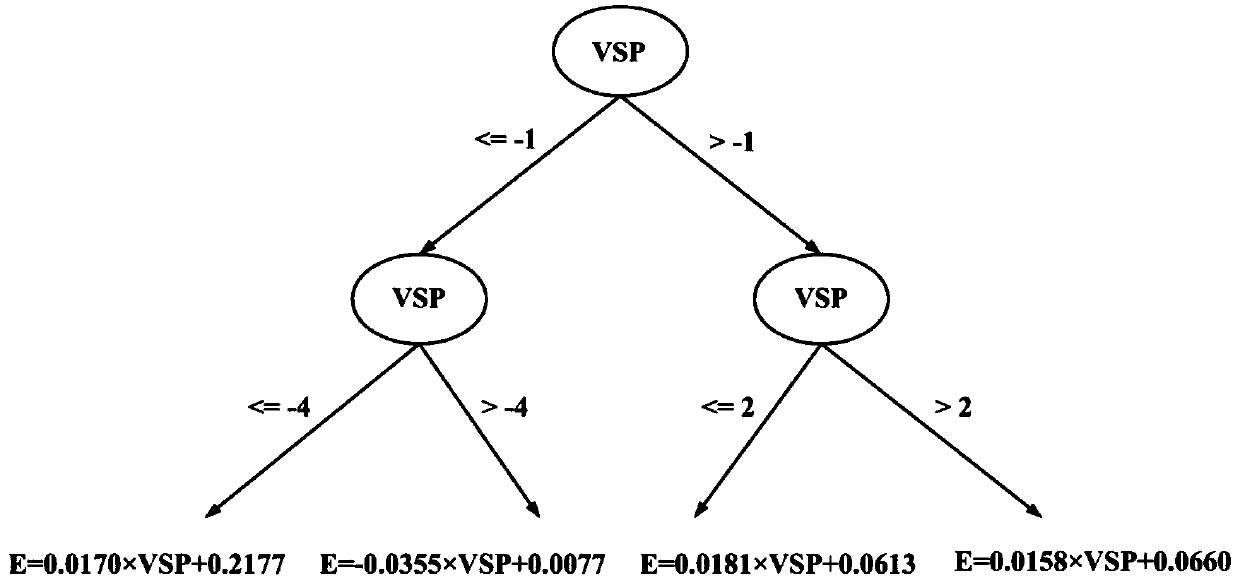Toll station vehicle emission prediction method based on vehicle specific power and model tree regression
A prediction method and specific power technology, which is applied in the field of transportation energy saving and emission reduction, can solve problems such as insufficient fuel combustion, vehicle queuing, and increased emission of pollutants, and achieve the effect of simple, feasible, intuitive, and easy-to-use methods
- Summary
- Abstract
- Description
- Claims
- Application Information
AI Technical Summary
Problems solved by technology
Method used
Image
Examples
Embodiment
[0053] Taking the ETC lane and manual toll lane at the Xuejia toll station on the G42 National Highway as an example, the CO, HC, NOx and CO 2 Building a real-time mass emission rate model based on vehicle specific power and model tree regression. Firstly, the basic data of the toll station is obtained. The volume concentration of CO, HC, NOx and CO2 gas in the vehicle exhaust gas is collected in real time by the AUTOplus vehicle exhaust analyzer, and the GPS 16-HVS instrument is used to collect real-time data during emission measurement. To test the speed of the vehicle, the time of the two instruments should be adjusted to be consistent when collecting the two data; a total of 1352 experimental samples have been collected in the embodiment, of which 1092 samples are used as training data sets to build models, and 260 experimental samples are used as test data sets To evaluate and compare the pros and cons of the models.
[0054] The sample size collected in the embodiment o...
PUM
 Login to View More
Login to View More Abstract
Description
Claims
Application Information
 Login to View More
Login to View More - R&D
- Intellectual Property
- Life Sciences
- Materials
- Tech Scout
- Unparalleled Data Quality
- Higher Quality Content
- 60% Fewer Hallucinations
Browse by: Latest US Patents, China's latest patents, Technical Efficacy Thesaurus, Application Domain, Technology Topic, Popular Technical Reports.
© 2025 PatSnap. All rights reserved.Legal|Privacy policy|Modern Slavery Act Transparency Statement|Sitemap|About US| Contact US: help@patsnap.com



